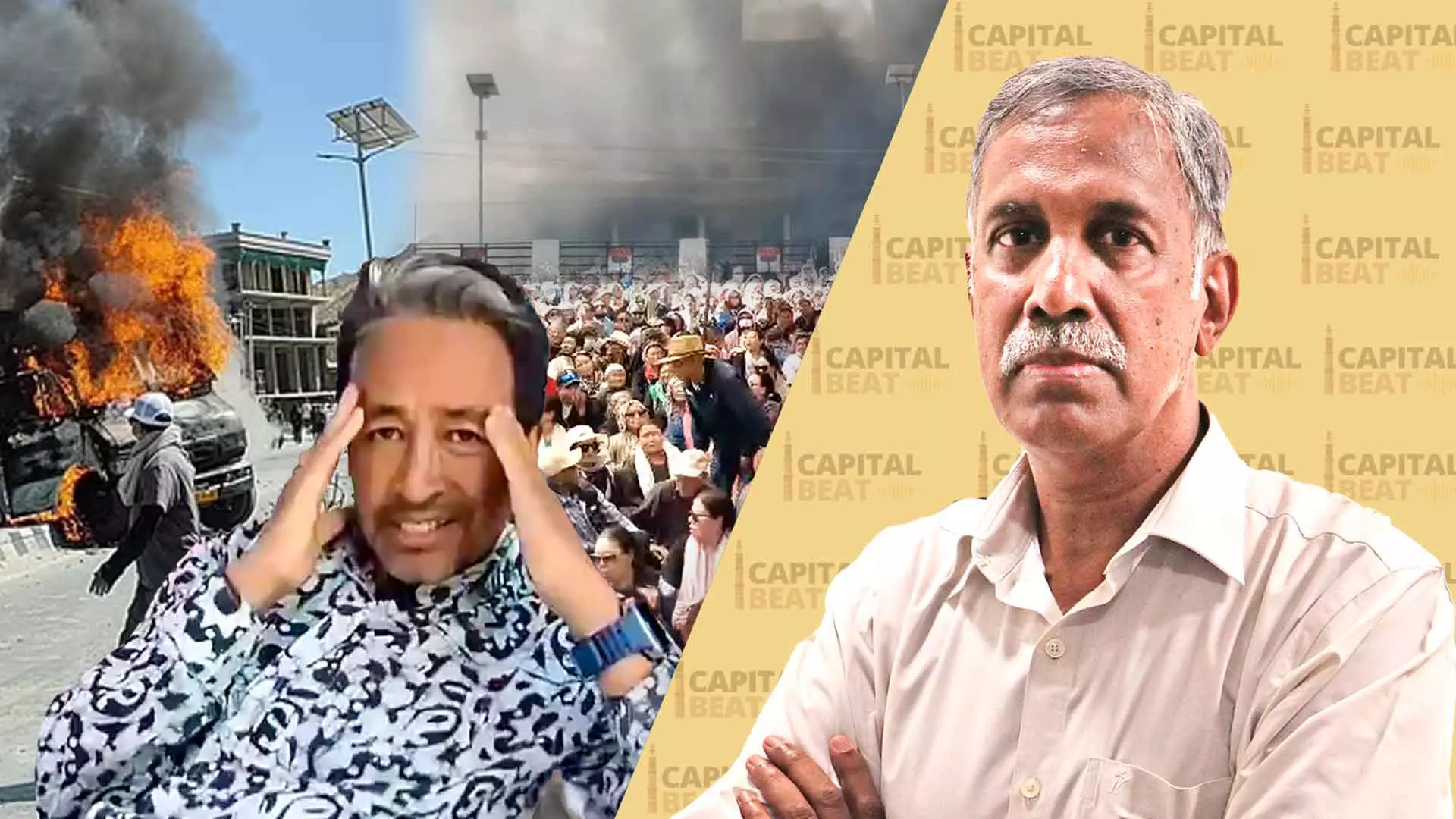
What led to Ladakh unrest, and why was Sonam Wangchuk arrested? | Capital Beat
Curfew, deaths, detentions, and the NSA invoked — Ladakh’s statehood agitation takes a turbulent turn as talks with the Centre loom

In this episode of Capital Beat, S Srinivasan, Editor-in-Chief of The Federal, and Dr. Mutasif Ladakhi, academic and member of the Ladakh Research Scholars Forum, discussed the aftermath of widespread protests in Leh — including curfew, fatalities, large-scale injuries, and the detention of activist Sonam Wangchuk. The conversation focused on on-ground conditions, the leadership of the statehood movement, and the schedule of talks with the Centre.
On Wednesday (September 24), curfew was clamped in Leh following widespread protests and subsequent violence that resulted in four deaths and injuries to 90 persons. The protest call had been issued by the Leh Apex Body (LAB) to advance demands for statehood and extension of Sixth Schedule safeguards.
Also read: Activist Sonam Wangchuk arrested after Ladakh clashes
On Friday, police detained activist Sonam Wangchuk and booked him under the National Security Act (NSA). Reports from Leh said he was taken to an undisclosed location. The town remained under curfew for a third day while security was tightened and internet services were snapped in some areas.
Detention and immediate fallout
Dr. Ladakhi described the atmosphere in Leh as one of both anger and sadness, noting large numbers of arrests and injured protesters receiving hospital care.
“Four of our youths have been killed in broad daylight,” Dr. Mutasif said. He noted that between 40 and 50 youths remained under arrest and that many detainees had reported injuries while in custody.
Leadership and movement history
The movement in Leh is led by the Leh Apex Body (LAB), a coalition of local religious and civil bodies. In Kargil, the Kargil Democratic Alliance (KDA) performs a similar coordinating role.
Also read: In Leh, people run short of supplies amid curfew
Wangchuk is the most prominent public figure associated with the protests, but the movement draws on wider organisational structures across both Leh and Kargil. The agitation traces its roots to campaigns that intensified around 2019 and continued into the early 2020s.
A preparatory meeting with the Ministry of Home Affairs (MHA) and representatives of LAB and KDA has been scheduled ahead of a High-Powered Committee meeting with the Centre on October 6. They indicated that protests will continue until demonstrators are satisfied with the outcomes of talks.
How the violence unfolded
The discussion recorded that the violent incidents occurred away from the primary protest site. Youths marching towards the Hill Council office were reportedly stopped from entering; tear gas was deployed; and agitated groups subsequently moved towards the BJP office, where arson and vandalism were reported.
Dr. Mutasif described Wangchuk’s long emphasis on non-violence and environmental protection as a core element of the campaign. The violence of the incident was characterised in the discussion as a spontaneous escalation linked to confrontations between protesters and deployed security forces.
Also read: Congress says Ladakh anguish must stir govt’s conscience; accuses BJP of 'mudslinging'
He stressed that the unrest reflected deeper economic grievances, noting that local youth perceive a mismatch between large public expenditures and the absence of stable employment opportunities for residents.
Curfew, talks, and everyday impact
Senior leaders convened a press conference calling for peace after central authorities invited representatives for formal talks. Preparations were reported for a meeting between LAB, KDA and the Home Ministry ahead of the October 6 High-Powered Committee session.
Reports indicated shortages of essentials in Leh during the curfew, citing limited supplies of rations, milk and vegetables. Movement restrictions included persistent checks on residents’ movements and heightened scrutiny at checkpoints.
Dr. Mutasif drew attention to the local population’s long association with the security forces and described the community reaction to being portrayed as influenced by external actors as a source of distress.
Political context and pending demands
The discussion noted recent measures proposed in talks with the Centre, including a domicile scheme intended to prioritise locals for certain jobs. Discussion on inclusion under the Sixth Schedule and full statehood remained, in the account, unresolved and met with apparent hesitation from authorities.
Dr. Mutasif said, “This particular circumstance could have been solved very easily had the administration come clean.”
The conversation recorded skepticism about the pace and content of central responses to long-standing demands, with emphasis on the persistence of dialogue and the scheduled High-Powered Committee meeting as the next formal engagement.
(The content above has been transcribed from video using a fine-tuned AI model. To ensure accuracy, quality, and editorial integrity, we employ a Human-In-The-Loop (HITL) process. While AI assists in creating the initial draft, our experienced editorial team carefully reviews, edits, and refines the content before publication. At The Federal, we combine the efficiency of AI with the expertise of human editors to deliver reliable and insightful journalism.)

